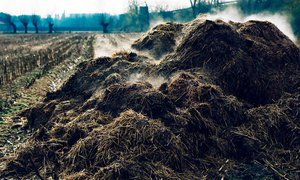Improving accounting for organic ferilizers in the nitrogen balance calculation .

MOMENT OF INNOVATION..
INNOVATION STATUS.
The mineralization of soil organic matter, apart from any input, constitutes a very significant nitrogen input. The quantities of nitrogen released by the soil for cultivation depend :
- on soil temperature and humidity mainly
- on the state of the soil and its functioning (some soils mineralize the organic matter faster than others)
- on cultural interventions: tillage under favorable conditions can temporarily and strongly boost the mineralization
- of the crop's cycle: maize, sorghum and sunflower value nitrogen released from spring to summer while a winter cereal will only use spring mineralization
- on irrigation, which enhances mineralization on summer crops
The predicted nitrogen balance consists in predicting the exact dose of nitrogen to be added to the crop in order to avoid :
- over-fertilization, which can cause underground pollution by nitrates, unnecessary costs and increased lodging risks for cereals
- under fertilization causing consequent losses of yield
The challenge is to develop techniques to better understand the composition of an organic fertilizer (solid manure, slurry manure, poultry manure ...) on one hand, and better understand the mechanisms of mineralization and volatilization of nitrogen that it contains. This information, which is decisive for the quantity of nitrogen actually available, should make it possible to adjust with a maximum of precision the organic contribution to the real needs of the plant.